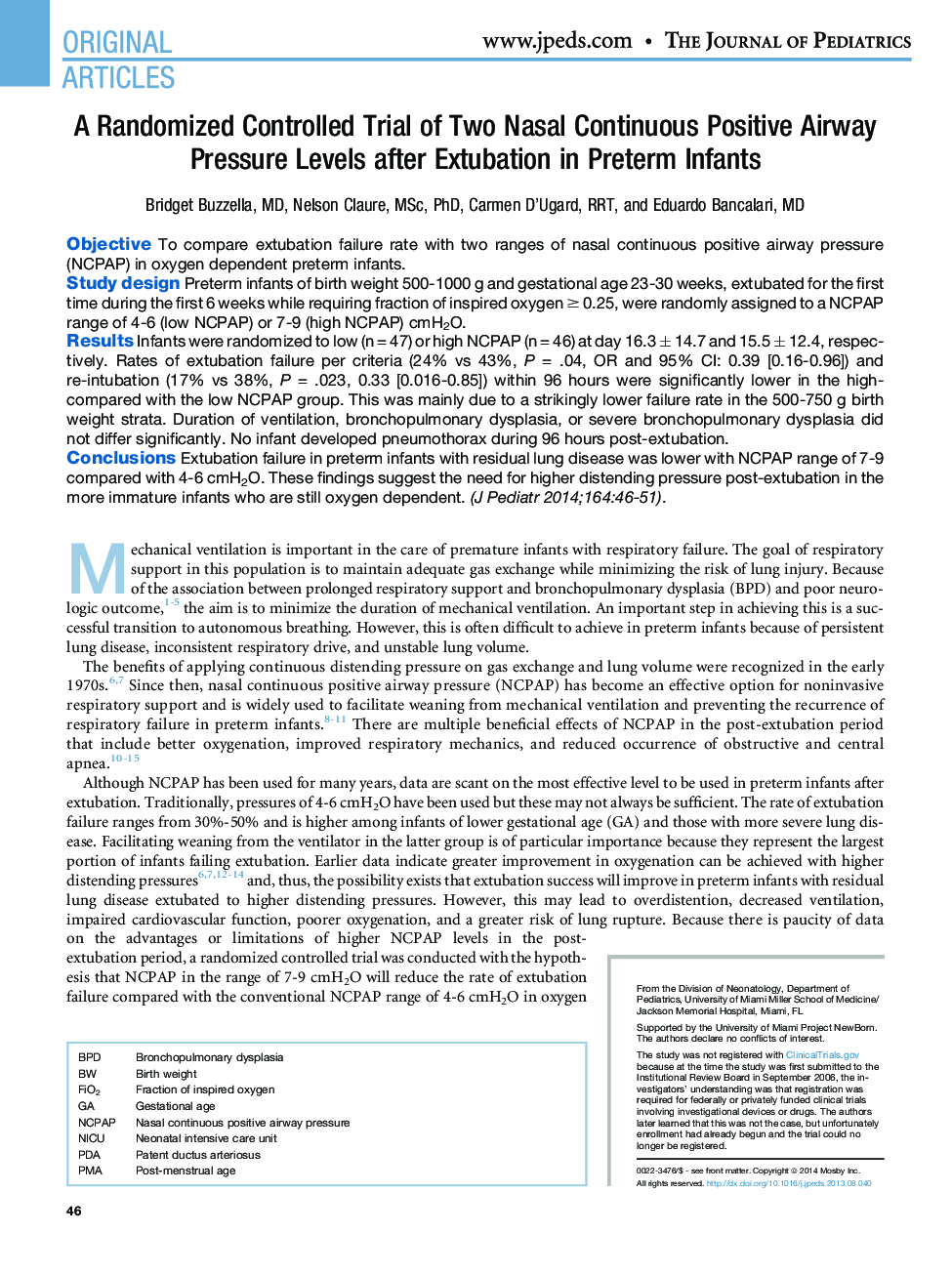| کد مقاله | کد نشریه | سال انتشار | مقاله انگلیسی | نسخه تمام متن |
|---|---|---|---|---|
| 4165003 | 1607460 | 2014 | 6 صفحه PDF | دانلود رایگان |

ObjectiveTo compare extubation failure rate with two ranges of nasal continuous positive airway pressure (NCPAP) in oxygen dependent preterm infants.Study designPreterm infants of birth weight 500-1000 g and gestational age 23-30 weeks, extubated for the first time during the first 6 weeks while requiring fraction of inspired oxygen ≥ 0.25, were randomly assigned to a NCPAP range of 4-6 (low NCPAP) or 7-9 (high NCPAP) cmH2O.ResultsInfants were randomized to low (n = 47) or high NCPAP (n = 46) at day 16.3 ± 14.7 and 15.5 ± 12.4, respectively. Rates of extubation failure per criteria (24% vs 43%, P = .04, OR and 95% CI: 0.39 [0.16-0.96]) and re-intubation (17% vs 38%, P = .023, 0.33 [0.016-0.85]) within 96 hours were significantly lower in the high- compared with the low NCPAP group. This was mainly due to a strikingly lower failure rate in the 500-750 g birth weight strata. Duration of ventilation, bronchopulmonary dysplasia, or severe bronchopulmonary dysplasia did not differ significantly. No infant developed pneumothorax during 96 hours post-extubation.ConclusionsExtubation failure in preterm infants with residual lung disease was lower with NCPAP range of 7-9 compared with 4-6 cmH2O. These findings suggest the need for higher distending pressure post-extubation in the more immature infants who are still oxygen dependent.
Journal: The Journal of Pediatrics - Volume 164, Issue 1, January 2014, Pages 46–51